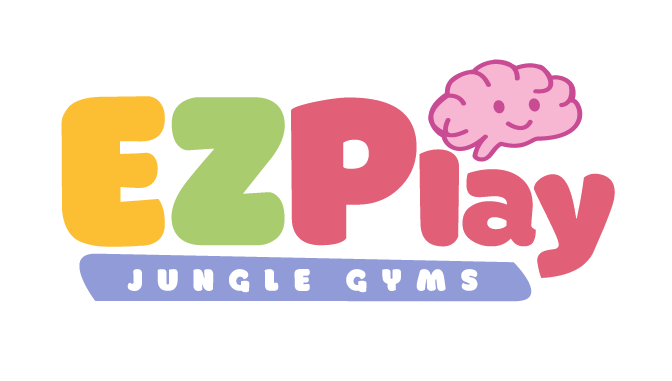
Primitive Reflexes: What Parents Need to Know (and How Play Can Help)
Written by Dr. Stefanie Rodsater, Pediatric Chiropractor and Founder of Building Brilliant Brains
Your baby was born with a brilliant, built-in brain training system.
It’s called primitive reflexes-and they’re the secret foundation of every milestone your child will hit (or miss).
These reflexes help your baby survive in the beginning… but they’re meant to disappear as the brain matures.
The problem?
In today’s container culture, many babies aren’t moving enough to integrate these reflexes.
And that can show up later as clumsiness, poor focus, sensory issues, or emotional dysregulation.
Let’s break down what primitive reflexes are, why they matter, and how purposeful movement—like what your child gets from EZPlay toys-can help organize the brain from the ground up.

What Are Primitive Reflexes?
Primitive reflexes are automatic movements babies are born with.
They’re essential for:
-
Survival (breathing, feeding, reacting)
-
Brain wiring and sensory processing
-
Laying the foundation for voluntary control of the body
Think of them as early training wheels for the nervous system.
But here’s the catch—these reflexes must eventually be integrated (inhibited by the brain) for your child to progress developmentally.
Common Reflexes and Why They Matter
🌀 Moro Reflex (startle)
If retained: easily overwhelmed, anxiety, poor sleep
🌀 ATNR (Asymmetrical Tonic Neck Reflex)
If retained: poor hand-eye coordination, delayed crawling, difficulty crossing midline
🌀 STNR (Symmetrical Tonic Neck Reflex)
If retained: W-sitting, clumsy posture, trouble sitting still
🌀 TLR (Tonic Labyrinthine Reflex)
If retained: poor balance, weak core, sensory sensitivity
🌀 Palmar + Babinski Reflexes
If retained: poor handwriting, toe-walking, lack of hand/foot awareness
How to Know If Reflexes Haven’t Integrated
Here are some signs:
🚩 Skipped crawling
🚩 Avoids tummy time
🚩 W-sits or toe-walks
🚩 Has trouble staying seated or paying attention
🚩 Is sensitive to clothing, tags, lights, or noises
🚩 Meltdowns often, struggles with transitions
🚩 Appears clumsy or accident-prone
These may seem behavioral—but they’re actually neurological.
Movement Is the Medicine
Reflexes integrate through movement.
Not just any movement—purposeful, full-body, brain-stimulating movement that engages:
-
Cross-pattern crawling
-
Climbing
-
Hanging
-
Rolling
-
Balancing
-
Spinning
-
Jumping
This is exactly what Glenn Doman taught:
“The brain grows by use.”
EZPlay Toys That Support Reflex Integration
These toys aren’t just fun-they’re tools for neurological maturity.
🧗Koala Adventure Playset
✅ Climbing builds core + integrates STNR
✅ Hanging activates postural reflexes + improves head control
🐼 Panda Playground Jungle Gym
✅ Offers opportunities for brachiation (key for ATNR integration)
✅ Encourages crawling under, climbing over, and rolling off safely
🪵 Wobble Balance Board
✅ Stimulates the vestibular system (key for TLR)
✅ Encourages bare feet—important for Babinski reflex development
🏕️ Panda Teepee Tent
✅ Use for hide-and-seek, rolling, quiet time
✅ Build a calm-down zone that supports regulation and sensory integration
Final Thoughts
Primitive reflexes are the body’s first teachers.
They guide early development, but they’re meant to move on once the brain takes over.
When those reflexes stick around, kids struggle-not because they’re “bad,” but because their brain is still waiting for the right input.
That’s why movement matters.
That’s why your home environment makes a difference.
And that’s why EZPlay toys are more than just fun-they’re brain-building tools that help your child hit milestones, regulate emotions, and feel confident in their body.
🧠 Want to give your child the neurological foundation they deserve?
Explore EZPlay’s indoor movement toys designed to support healthy brain development—starting from day one.








